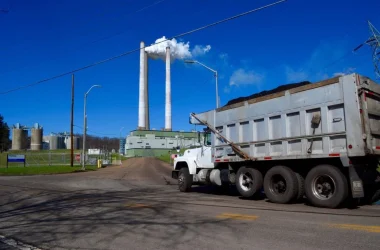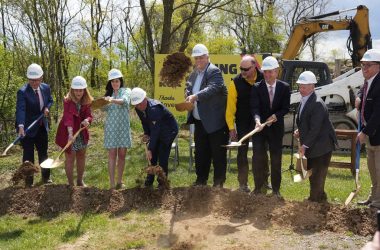By CHARLES YOUNG
The Exponent Telegram
CLARKSBURG, W.Va. — For nearly 90 years, the West Virginia state parks and forest system has served as a symbol for all the Mountain State has to offer.

According to the West Virginia State Parks mission statement, the system’s aim is to “promote conservation by preserving and protecting natural areas of unique or exceptional scenic, scientific, cultural, archaeological or historical significance and to provide outdoor recreational opportunities for the citizens of this state and its visitors.”
Out of this idea has grown a vibrant, varied and vast system of 34 state parks, nine state forests and two state-traversing rail trails.
The sites offer residents and tourists myriad recreational and leisure options, and bolster the state’s economy while providing meaningful employment opportunities.
According to an independently conducted economic impact study, more than 7.1 million people visited the parks system during fiscal year 2014-15 and spent more than $226.5 million during their trips. Approximately 46 percent of those visitors traveled from out of state. During the same time period, the parks system had more than 3,200 full-time equivalent employees.
The total economic impact of the parks system was between $160.5 million and $189 million. The study states that for every $1 of general tax revenue provided to the parks system, $13.15 of new revenues are added to state’s economy.
Sam England, chief of the parks system’s Parks and Recreation Section, said this is the most significant data.
“Those numbers show the real importance of the parks system to the state,” he said. “There are a lot of numbers in that report, but I feel that one speaks most significantly to that.”
West Virginia is known to have “one of the better parks systems in the country,” England said. “We are a very complex and diverse parks system.”
The system’s offerings range from day-use facilities for hiking and picnicking to camping and lodging facilities for overnight guests. There are also resort state parks — such as Pipestem Resort Park, Stonewall Resort and Canaan Valley Resort Park — which feature world-class golf courses and other outdoor opportunities.
While the parks system was codified into West Virginia law in 1928, its official beginnings are contested, England said.
“The first state park, it’s kind of argued whether it was Droop Mountain or Watoga,” he said. “We kind of argue here amongst ourselves which one was the first state park.”
Although the Droop Mountain battlefield site was the first site in the state to be marked for conservation by the Natural Resources Commission, it was not officially designated as a state park until years later. Watoga State Park in Pocahontas County was the first piece of land specifically developed into a state park, England said.
“It just really depends on who you ask,” he added.
England, who has worked for the parks system for more than 30 years, said he has had the opportunity to observe firsthand as the system has grown and expanded.
During the 1930s and ’40s, members of the Civilian Conservation Corps completed numerous construction projects throughout the developing parks system. These projects included lodges, cabins and administrative facilities — many still in use today, England said.
“The Civilian Conservation Corps folks began to improve and make state parks what they are,” he said. “If it weren’t for them, there would be a lot of parks that wouldn’t be developed.”
During the 1950s, the parks system began to modernize, constructing cabins with contemporary amenities.
“We had a lot of major developments during that period,” England said. “The modern cabins actually had full-on electric lights and hot water.”
Throughout the 1960s and ’70s, the resort parks were developed and constructed, adding golf courses and luxury accommodations.
“That’s when we had a significant birth of these resort-type facilities, during that period,” England said.
Scott Durham, superintendent of Twin Falls Resort State Park in Wyoming County, said modernization efforts are important to drawing younger visitors.
“We’ve been working for quite a while to keep up with trends as they move forward,” he said.
The efforts include offering activities like disc golf and hosting music festivals and constructing indoor swimming facilities, Durham said.
While everyone recognizes the importance of modernization and attracting younger visitors, the money to do so isn’t always there, England said.
The West Virginia State Parks Foundation, a nonprofit organization, works to provide the parks system with additional funds beyond what the Legislature allots.
Bob Hoke, the foundation’s treasurer, said the organization is a way for people to give money, land and other assets to their park of choice.
“Basically, the foundation is an umbrella organization,” he said. “Several of the state parks have their own local foundations, but a lot of parks don’t have their own foundation.”
For parks that do not, Hoke said his organization accepts assets and distributes them to the benefactor’s desired park.
Since the organization was founded in 1998, Hoke said the foundation has accepted and distributed more than $250,000 to various parks around the state.
Bennett said making sure the parks system is properly funded is important because of the essential role parks play in the state.
“Our state parks are a representation of us as West Virginians — both past and present,” he said. “From that, we must always protect and care for these great parks.”





